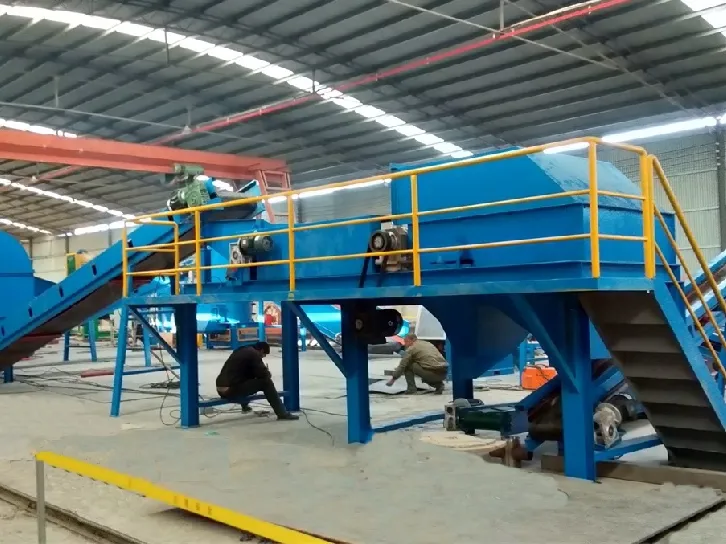

Οκτ . 22, 2024 03:44 Back to list
The Role of Scrap Steel Shredders in the Recycling Industry
In recent years, the global focus on environmental sustainability has led to significant advancements in recycling technologies. Among these innovations, scrap steel shredders have emerged as essential tools in the recycling industry. These machines play a pivotal role in the efficient processing of scrap metal, especially steel, enabling its reuse in manufacturing and reducing the environmental impact of metal production.
A scrap steel shredder operates by mechanically breaking down large quantities of scrap metal into smaller, more manageable pieces. The process begins with the collection of scrap steel from various sources, including old vehicles, abandoned machinery, and industrial waste. Once gathered, the scrap metal is fed into the shredder, which utilizes high-speed rotating blades to shred the material into smaller fragments. This physical transformation not only facilitates easier handling and transport but also prepares the metal for subsequent processing steps.
One of the key advantages of using a shredder is its ability to process a diverse range of steel types, from light gauge metal to heavier structural components. This versatility is critical in the recycling industry, as it allows for the efficient recovery of materials from various sources. Moreover, shredders are equipped with advanced technologies that can separate different metal types during the shredding process, ensuring that the final output is of high purity and quality. This is particularly important for manufacturers who require specific grades of recycled steel for their production processes.

The environmental benefits of scrap steel shredders cannot be overstated. Recycling steel significantly reduces the need for virgin materials, which in turn decreases the energy consumption associated with mining, refining, and processing raw metals. Studies have shown that recycling steel saves about 60% of the energy required to produce new steel from raw materials. Additionally, it significantly lowers greenhouse gas emissions, making it a vital component in the fight against climate change.
Furthermore, the efficient operation of scrap steel shredders contributes to reducing waste in landfills. By recycling scrap metal, we can divert substantial amounts of material from waste streams, extending the lifespan of existing landfills and minimizing the environmental consequences associated with landfill use. This shift towards a circular economy emphasizes the importance of recycling as a sustainable practice, where waste is minimized, and resources are continuously reused.
Despite their numerous advantages, the operation of scrap steel shredders also presents challenges. Ensuring worker safety during the shredding process is paramount, as the machinery involved can be hazardous if not properly managed. Additionally, keeping the shredders well-maintained is crucial for optimizing their performance and preventing costly downtime.
In conclusion, scrap steel shredders are integral to the modern recycling industry, playing a crucial role in transforming scrap steel into valuable resources. By enhancing the efficiency of metal recycling, these machines contribute significantly to environmental sustainability, energy conservation, and waste reduction. As the demand for recycled materials continues to rise, the importance of advanced shredding technologies will only grow, paving the way for a more sustainable future.
Latest news
Troubleshooting Common Eddy Separator Problems
NewsJul.04,2025
The Role of Metal Recycling Plants in Circular Economy
NewsJul.04,2025
The Impact of Recycling Line Pickers on Waste Management Costs
NewsJul.04,2025
Safety Features Every Metal Shredder Should Have
NewsJul.04,2025
How Industrial Shredders Improve Waste Management Systems
NewsJul.04,2025
How Cable Granulators Contribute to Sustainable Recycling
NewsJul.04,2025